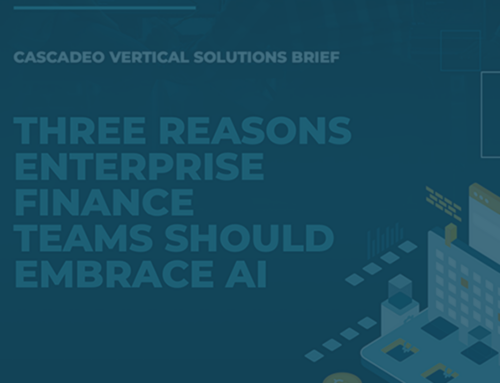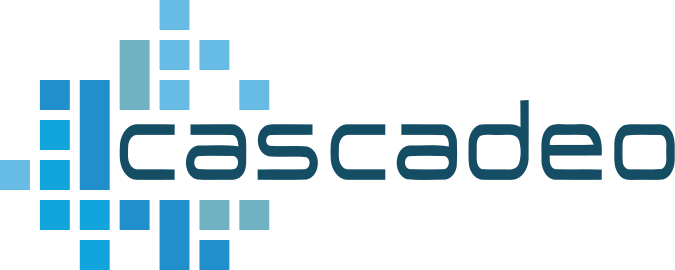
Catch up on January and February’s blog posts, featuring digital immunity, composability, the future of data, applied observability, low code and no code, and digital ecosystems.
Public Cloud News and Knowledge from January & February 2023
We’re exploring emerging tech and big ideas on the Cascadeo blog. Read on for a roundup of topics you may have missed.
Building a Digital Immune System for a Healthy Customer Experience
In recent years most of us have become casual experts on the immune system. We’ve read about antibodies and T-cells and their activation, about hazards and pitfalls and prevention. We’ve heard about the innate immunity we’re born with and the adaptive immunity we acquire via exposure and vaccines. Sometimes the human immune system seems nothing short of miraculous. Other times it seems so fallible as to be useless. When its components work together and the risks it’s exposed to are manageable, the body is resilient and well. When those components stop working together, or one of them breaks down, we’re in danger from infection: too little immune activation; or auto-immune disorders: too much.
Your organization’s digital environment has a similar relationship to its health and resiliency. Design, development, operations, and analytics work together to keep your system stable. When key components of any of these functions fail, your critical business capacities become vulnerable, not only to security threats, but to performance issues that result in poor customer experiences, slowed market reactivity, and interrupted or delayed deployment and delivery. Click here to read more.
Putting it All Together: Boost Your Bottom Line with Composability

But composable business goes beyond technology infrastructure. It constitutes a way of thinking about and structuring your entire organization, so that everything you do has agility, resiliency, and adaptability built in. Click here to read more.
Comprehensive Data Management and the Future of Business

Unfortunately, according to the Data and Analytics Leadership Annual Executive Survey 2023, while organizations recognize that building their data capacities is essential, most are lagging behind their own benchmarks in doing so. Why? Entrenched corporate culture, often including a lack of clear data ethics policies and practices, leaves organizations at large distrustful of data management functions. Click here to read more.
Making Data Valuable with Applied Observability
 Modern technology allows us to know so much. GPS has long been able to tell us if there’s traffic ahead. Thermostats in some areas automatically adjust to municipal calls for energy conservation. Your car’s dashboard tells you with startling precision how much usability is left in its oil. Social media gives us the chance to determine, before we’ve even met someone, whether we want to show up for a first date. Once in a while, we even learn something we didn’t want to know. But in the long run, we have clearly chosen information over guessing, knowledge over hunch. We love a story where an instinct, a gut feeling, prompts a bold choice that leads to a win. But let’s be honest: those instincts fail as often as they succeed. That’s what makes them good stories. It’s long established that many people overestimate their own abilities and knowledge, and even when they don’t, a guess is a risk when there’s money on the line.
Modern technology allows us to know so much. GPS has long been able to tell us if there’s traffic ahead. Thermostats in some areas automatically adjust to municipal calls for energy conservation. Your car’s dashboard tells you with startling precision how much usability is left in its oil. Social media gives us the chance to determine, before we’ve even met someone, whether we want to show up for a first date. Once in a while, we even learn something we didn’t want to know. But in the long run, we have clearly chosen information over guessing, knowledge over hunch. We love a story where an instinct, a gut feeling, prompts a bold choice that leads to a win. But let’s be honest: those instincts fail as often as they succeed. That’s what makes them good stories. It’s long established that many people overestimate their own abilities and knowledge, and even when they don’t, a guess is a risk when there’s money on the line.
A better story is the less legendary one: the leader who makes decisions driven by clear, actionable evidence provided by reliable sources and made legible via a proactive data strategy. Click here to read more.
Low Code and No Code: Bringing DIY Ethics into Your Composable Business
 If you’ve ever done DIY work on a house, you’re familiar with the two first principles: find the right tools, and know your limitations. An ordinary hammer and ratchet set won’t get you very far when you’re trying to achieve the outcomes of professionals with nail guns, sophisticated cutting and drilling equipment, and decades of experience using them. You can’t tile a floor without the appropriate trowel and mastic, plus some basic knowledge of how to measure, cut, and align tile. When you run into these limitations, you have two choices: Find a product that does a few foundational steps for you, or call in an expert. Otherwise you end up living in a social media cautionary tale.
If you’ve ever done DIY work on a house, you’re familiar with the two first principles: find the right tools, and know your limitations. An ordinary hammer and ratchet set won’t get you very far when you’re trying to achieve the outcomes of professionals with nail guns, sophisticated cutting and drilling equipment, and decades of experience using them. You can’t tile a floor without the appropriate trowel and mastic, plus some basic knowledge of how to measure, cut, and align tile. When you run into these limitations, you have two choices: Find a product that does a few foundational steps for you, or call in an expert. Otherwise you end up living in a social media cautionary tale.
Likewise, you probably shouldn’t DIY app dev. Your options, then, when it’s time to grow and evolve, are to hire the job out, expand your staff, or implement packaged components where much of the work has already been done. Enter the low code / no code concept.
As terminology, “low code” and “no code” have long seemed inaccessible and complicated, implying some kind of magical creative process whereby coded functions suddenly occur without any code having been written. Click here to read more.
Building Value into Every Interaction with Digital Ecosystems
 Gathering data from multiple sources, collaborating with vendors and partners, implementing new processes and interactions with stakeholders, creating new offerings and communicating them to customers, and doing all of this digitally makes for a significant set of complications to balance and prioritize, unless you step back to see how the pieces all fit together, building them into contained, self-sustaining systems that function much the way a group of organisms might function in the natural world: as digital ecosystems.
Gathering data from multiple sources, collaborating with vendors and partners, implementing new processes and interactions with stakeholders, creating new offerings and communicating them to customers, and doing all of this digitally makes for a significant set of complications to balance and prioritize, unless you step back to see how the pieces all fit together, building them into contained, self-sustaining systems that function much the way a group of organisms might function in the natural world: as digital ecosystems.
A digital ecosystem isn’t so much a new technology or concept as it is an emerging way of understanding and describing systems most of us have been participating in for many years. In this construction, ecosystem is a metaphor for the ways in which a variety of digital technologies interact to benefit everyone involved in a given digital circle of life… Click here to read more.





